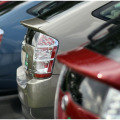Have you ever found yourself in a situation when you are looking at all those symbols on your tires and you’re asking yourself “what does it all means?” You must have at least once; otherwise you wouldn’t be on this page, reading the following. That, and much more about choosing a proper set for your vehicle will now be explained to help you understand the secret code of tyres.
First, a piece of advice: always go to a professional if you are in a need of changing your tyres, and if you have to do it yourself that should be done only in an emergency situation when you are on the road and you get a flat tyre. In that case, once you are done changing, head to the first mechanic. Your spare tyre is a spare for a reason, it has its limitations. This may seem like a benign situation, and something that shouldn’t even be said, but more than 10, 000 people get injured every year due to a tyre failure. To avoid having any sort of troubles, there are a few steps of prevention that you should be handling regularly. It is not a matter of luxury it is a matter of safety.
You should make sure that you are:
- Using a recommended size,
- Checking the pressure on a monthly basis,
- Having your tyres balanced on every change and especially before a long trip,
- Checking tread depth regularly so you could know when to change tyres,
- Checking for glue adhesion,
- Examining defective rims,
- Checking for air bubbles,
- And finally you should also check tyre manufacturing defects, although it is rare, it can actually happen. The result is shown as shredding, tread defects, and don’t worry too much because you can replace them if you notice any problem in time.
When it comes to understanding the codes and symbols of tyres, it may look like a complex set of numbers, but it is easily understandable when you know what you are looking for exactly.
- “P” means that it is a passenger vehicle. “LT” stands for Light Truck, “ST” for Special Trailer, and if there is only a letter “T” on your tyre that means that it is a spare tyre.
- The number that follows, for example “215,” is an indicator of width, presented in millimeters.
- The aspect ratio of the sidewall height follows, and this could be a two digit or a three digit number.
- The next letter on your tyre lets you know if the tyre is “R” for radial, “D” for diagonal or “B” for bias belt construction type.
- Your rim size should be presented in inches, and it is a two digit number or perhaps one digit.
- Next, you have your load index, and after that there is one more letter that symbolizes a speed index.
There is also a clear recognition of the tubules type of tyres, their maximum pressure and a visual representation of a snowflake if it is a type for a winter season. But you don’t need to memorize all of these codes, in fact, all you need to do is to find a place with the best range of offers and professionals will tell you what you need in a matter of seconds just by taking a glimpse, or you can tell them yourself what sort of car you are driving.
Did you know that first cars actually had their tyres bolted to the wheels? Imagine changing that type of tyre in an emergency situation. Drive safely.
















No Comments
Leave a comment Cancel